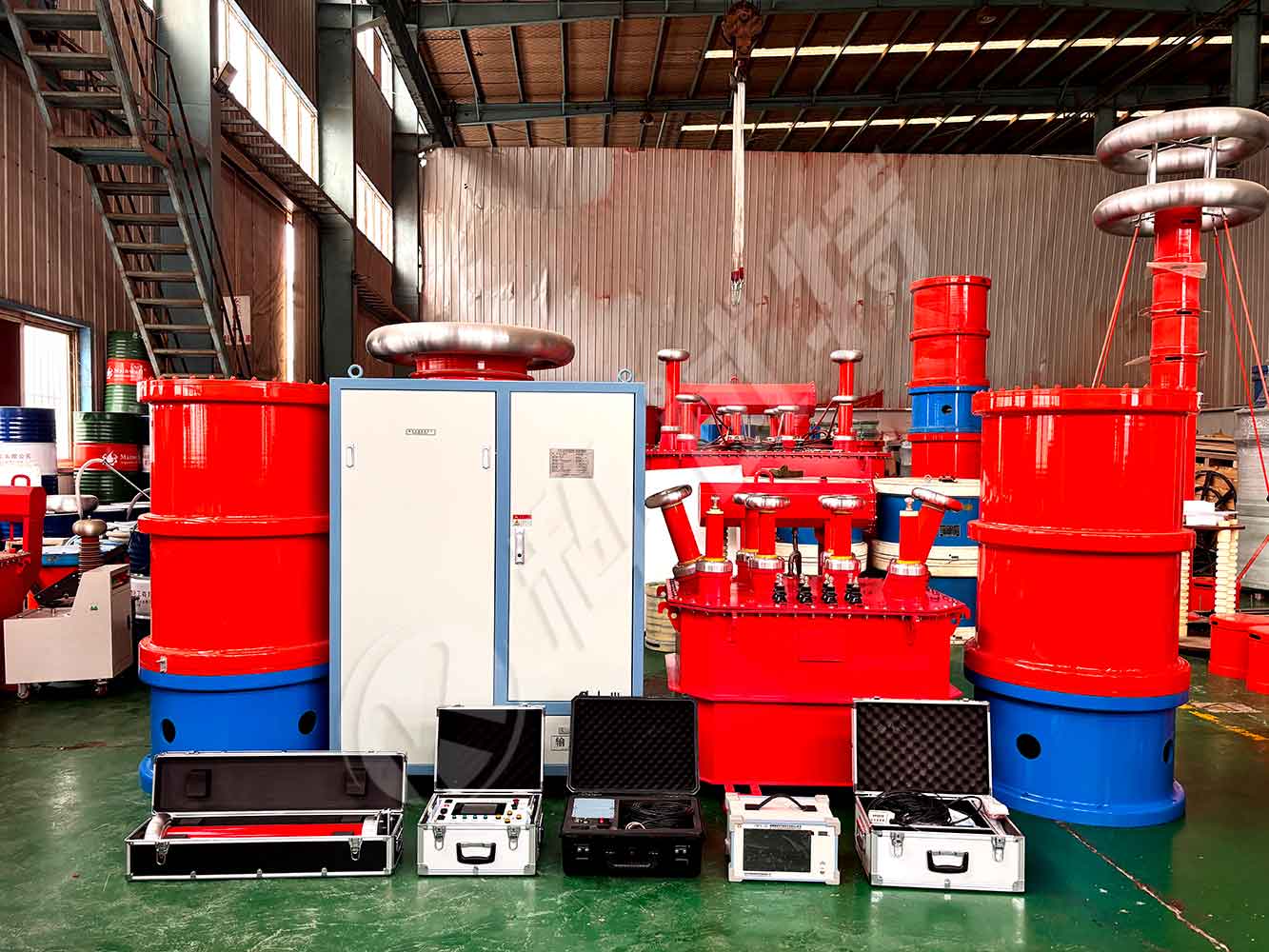For transformers, electromagnetic voltage transformers, etc., the test method of obtaining high voltage from secondary pressurization is often used to check the main insulation of the test object (referring to the insulation between windings to ground, between phases, and between windings of different voltage levels), and the insulation strength between turns, layers, segments, and between phases of the longitudinal insulation of transformers and voltage transformers is also tested. For power transformers and test transformers with graded insulation, the main insulation of the winding segments and the longitudinal insulation of the transformer itself are often subjected to induction withstand voltage testing using an induction withstand voltage testing device for simultaneous assessment.
Compared to the main insulation of transformers, which includes insulation between windings and between windings and iron cores, transformers also have another important insulation performance indicator - longitudinal insulation. Longitudinal insulation refers to the insulation between different points and parts of a transformer winding with different potentials, mainly including the insulation performance between turns, layers, and segments of the winding. The "inductive withstand voltage test" specified in national standards and IEC standards is one of the testing methods specifically used to test the longitudinal insulation performance of transformers.
So what is the specific purpose of using an induction voltage withstand test device for induction voltage withstand testing?
The longitudinal insulation of transformers mainly depends on the insulation medium inside the winding - the insulation paint of the enameled wire itself, transformer oil, insulation paper, impregnating paint, insulation glue, etc. (different types of transformers may contain one or more insulation media); It is difficult to ensure 100% purity of vertically insulated dielectrics, as they may contain solid impurities, bubbles, or moisture, and may also suffer varying degrees of damage during the production process.
The high field strength during transformer operation is concentrated at these defects, and the temperature rise caused by long-term load operation reduces the breakdown voltage of the insulation medium, resulting in partial discharge. The power absorbed by the dielectric through the external alternating electric field, i.e., the dielectric loss, will significantly increase, leading to severe heating of the dielectric and an increase in dielectric conductivity. The high current in this area will also generate heat, which will continue to increase the temperature of the dielectric, and the increase in temperature will in turn increase the conductivity of the dielectric. Such a long-term vicious cycle leads to thermal breakdown of the dielectric and damage to the entire transformer. This fault is manifested in the characteristics of the transformer, which is a significant increase in no-load current and no-load power consumption, and the winding has adverse phenomena such as burning, arcing, vibration, and whistling. It is extremely necessary to use an induction voltage withstand test device to detect whether a transformer contains longitudinal insulation defects.

The function and purpose of induction withstand voltage of power transformers are described as follows:
1. Effectively inspect the longitudinal insulation of fully insulated power transformers;
2. Partial main insulation and longitudinal insulation of the testable graded insulation transformer;
3. Can effectively test the voltage resistance of transformer longitudinal insulation;
4. For graded insulation transformers with different insulation levels at the beginning and end, using induction withstand voltage test can effectively reflect the insulation strength;
5. By using the non tested phase winding to support the tested winding and raise the neutral point position, both the main insulation and longitudinal insulation tests can be met simultaneously.
The induction withstand voltage test of transformers on site is generally measured by the self coupling method, using lower windings or non tested windings of the same voltage level to support the tested high-voltage winding. The voltage is easy to reach the test voltage and is also easy to control, which is a commonly used measurement method in the power sector.
Kvtester Electronics Technology Co.,Ltd. is a high-tech enterprise specializing in power testing, testing, research and development, production, and sales of testing equipment. It has been engaged in the electrical testing industry for many years, and its products are of high quality. We welcome customers to come and purchase. Service hotline: 0086-27-81778799, to learn more, visit the official website: www.kvtester.com





